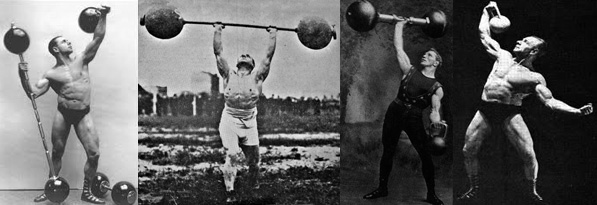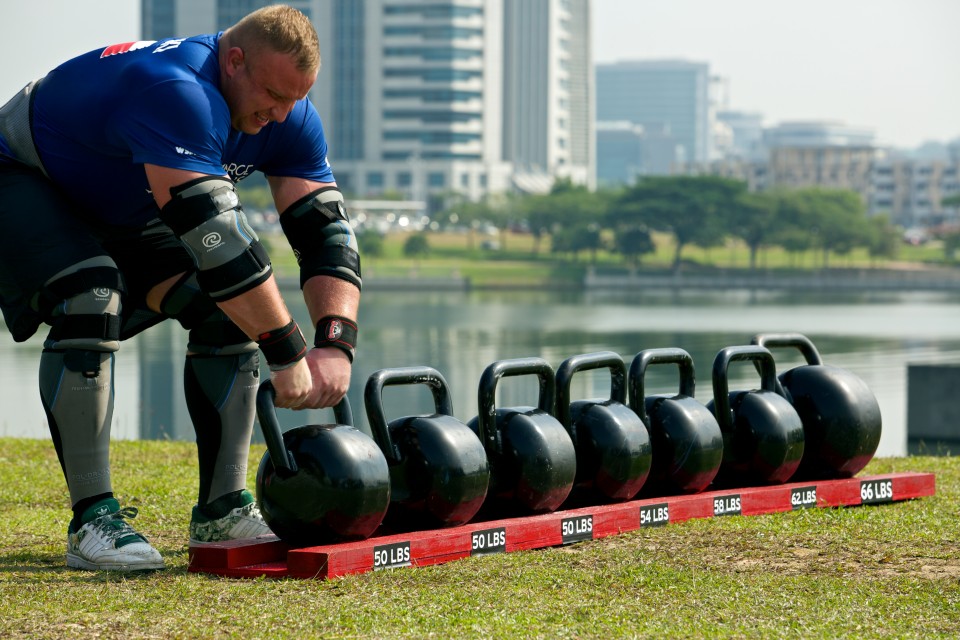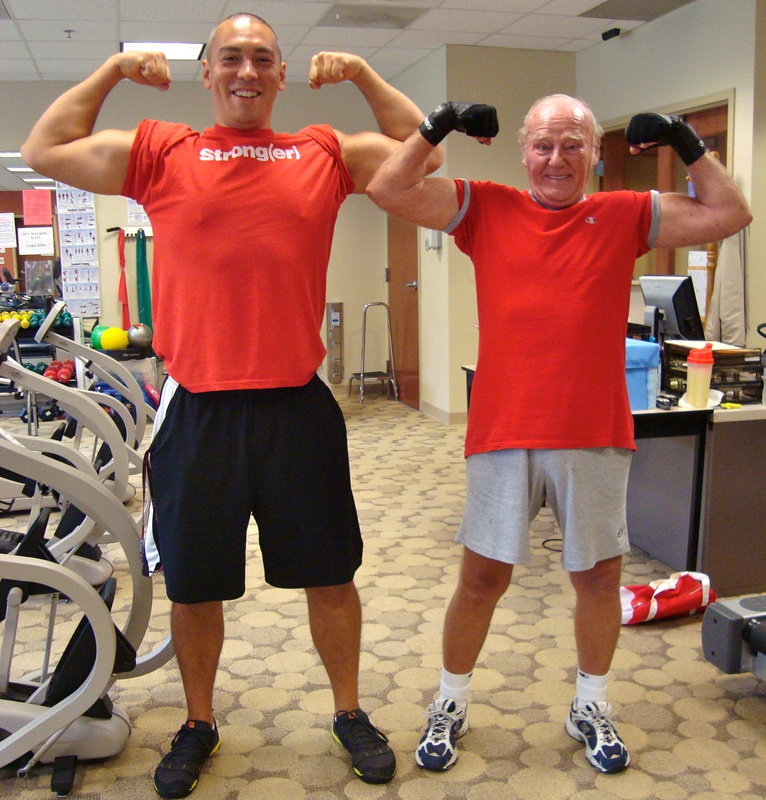
The Strength After Sixty is a senior fitness program that was developed over the period of about 20 years. It’s something I’ve been working on my entire career.
My first job in the fitness industry was in 2006 at Oak Crest Retirement Community. However, my first Strongman contest was in 2003. Although I didn’t know it at the time, the way I trained senior citizens would be heavily influenced by strongman training.
Old Time Strongman

The old time strongmen were not like the competitors you see today. First of all, if you lifted weights at all before the 1950’s you were odd. I’m talking carnival side show odd. In fact, many of the old time strongmen were performers in the circus and vaudeville-era.
Weight training was not mainstream back then, not even in sports. Practitioners were far and few in between and had diverse backgrounds such as farmers, wrestlers, “hand balancers”, etc.
Strongman methodology was as diverse as their backgrounds. Where their ideas overlapped was in healthy living. Every notable strongman or “fitness influencer” (before that was a thing) from history espoused things like clean eating, adequate sleep, fresh air, sunlight, eliminating stress, and of course, exercise.
From Charles Atlas and Jack Lalane, to Yosselle Greenstein (The Mighty Atom) and George Hackenschmidt (The Russian Lion); they all preached a similar message of health living.
And wouldn’t you know it? They all lived long, healthy lives, and were still strong after sixty.
Modern Day Strongman

Grzegorz Szymanski
Photo courtesy of worldsstrongestman.com
The modern day strongman is typically thought of as a competitive strongman. Odd object lifting as a sport. Like what you see on the Worlds Strongest Man competitions.
When you compete you are putting your performance before your health. Winning is the priority, and that’s not always compatible with longevity.
If that’s your goal that’s fine. I competed in strongman from 2003-2008 and it was a fun way to test myself and I made some lifelong friends. But I knew pushing myself into certain events and against other competitors wasn’t the healthiest endeavor.
I’m not knocking modern strongman competitors I’m just pointing out that there are differences in how we think of “strongman”.
There are aspects of the Strength After Sixty program that was inspired by both the old time and the modern strongman. However, science is where I tied all of my thoughts on senior fitness together.
Exercise Science
There were a few things that stood out to me in my time at University and when I was studying exercise science.
First of all, I was (and still am) primarily interested in muscular strength. Cardiorespiratory and energy metabolism is cool and all, but I was hyper-focused on strength training.
However, nobody seemed to share my enthusiasm. I had no professors who lifted, fellow classmates didn’t take it seriously, the courses were underwhelming, and even the research studies at the time I found to be lacking.
There seemed to be almost an under-emphasis on lifting weights. Especially when it came to the senior population. I had exercise science textbooks that identified loading the axial skeleton (hips and spine) as a means to improving bone-mineral density, yet there were no studies examining the relationship between progressive loads and stronger bones.
Perhaps we didn’t have the technology back then (I graduated in 2005), but I think we didn’t have the know-how. That is, the people conducting the research didn’t know how to train seniors, and the people who did have the coaching ability didn’t know how to produce a research study.
Senior Fitness Industry

When I started working as a Senior Fitness Specialist at a retirement home, I was once again underwhelmed by the lack of productive exercise.
They say that some exercise is better than nothing, but if you can fall asleep on the NuStep machine, that’s as good as no exercise.
Residents were prescribed almost exclusively machine based exercise. There was very little customization. Almost no thought was given to progression or how their exercise program would carry over to their ADL’s.
Activities of Daily Living. ADL’s. Things like picking stuff up, climbing stairs, getting up off of the floor, carrying groceries or reaching up to the top shelf of the cupboard.
There is a parallel from ADL’s to the things we do in strongman training. Deadlifts, squats, get ups, farmers walks and overhead pressing.
It didn’t take long before I had residents off of the machines and trying out my style of strength training. It also didn’t take long before we started seeing results!
I could go on and on about the unique methods that got tested during my time at the retirement community. Lets just say that it evolved overtime, no one ever got hurt, and the residents loved it!
Test Results

The first test results showing improvements in bone density came from one of the nurses at the retirement community. An employee, a post-menopausal woman (most at risk for osteoporosis) who took my kettlebell class. Her doctor recommended “weight bearing exercise” after a DEXA scan showed bone loss. 2 years after she started training her bone loss stopped (a “win” because both bone and muscle loss is expected). 4 years later her bone density increased.
Then another lady from my class came to me with her DEXA scan. In this case her bone density increased in 2 years of training.
Then I had another. And another.
Ultimately I had five women over the age of 60 come to me with test results that showed their bones were getting stronger.
That was enough for me to get together with Tom Bruns and write a research proposal. I took that proposal to Towson University in 2019 and it was eventually accepted, approved and launched at Baltimore Kettlebell Club.
